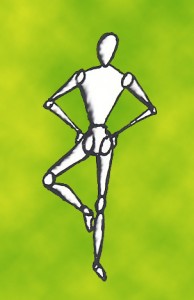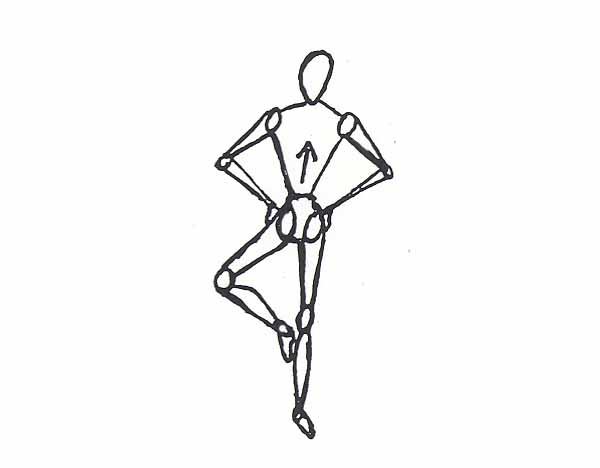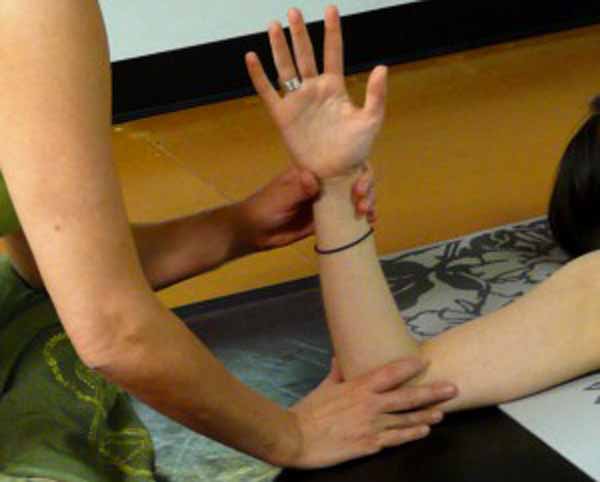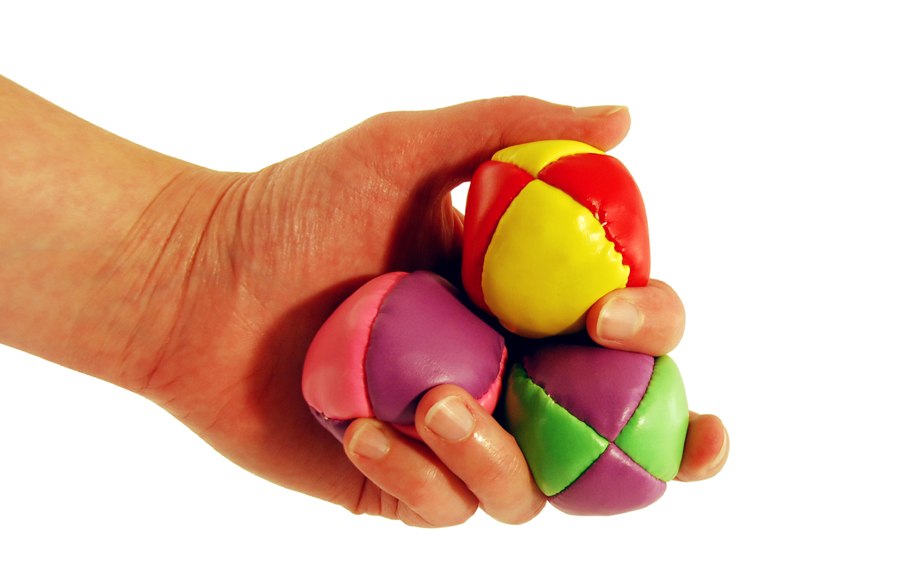Ask the Yogi: Posture Perfect

Q: I have been told that having bad posture can make back problems worse. How do I create a good standing posture? I have heard I am supposed to ‘tuck’ my pelvis, but tuck it where? I have also heard that a good posture has and S curve, or maybe it was a J curve – or at least it was some letter of the alphabet. I don’t know what to do. Help!
A:Through the years I have heard bad posture described in a variety of ways: flat back, hypo-lordotic, sway-back, hyper-lordotic and many other terms which basically describe either too much or too little curve where there should be curve. I have also heard quite a few terms that described good posture: S-curve, neutral spine, neutral posture and even the J-curve.
Basically these are all talking about the same thing – a good posture has a slight forward curve to the neck, a slight backward curve to the rib cage and a slight forward curve to the lower back. A good posture also has the line of weight dropping straight down from the ear through the shoulder, hips, knees and ankles. Since they are all in agreement, why is there any difference from one description to another?
It all has to do with what part of the body you use to describe good posture. It also has a lot to do with what words we use to talk about posture. We might start by saying to “Stand up straight” which is probably what most of us heard from our parents when we were slouchy teenagers. Yet, as familiar as we are with the phrase and perhaps hearing such words might make us stand a little better, the terms it uses are not abundantly clear. The ‘stand up’ is self explanatory, but what exactly is meant by ‘straight’?
Another term used to describe good posture has to do with the position of the pelvis. Many people are instructed to ‘tuck’ the pelvis. This is a rather vague term and can be interpreted as flattening out the low back curve as well as moving the hips forward toward the toes. Close to this is another phrase called “tuck the tailbone under” which seems to indicate tilting the pelvis so the low back curve is diminished.
Aside from vague terms, the other thing about general instructions for correcting posture is that they are one size fits all. Although we may have a lot of postural traits similar to one another, one person’s postural needs can vary widely from another.
Good posture is a position of the body which puts the least stress on our joints. In good, or the term I prefer, optimal posture, we are reducing the wear and tear on our joints, increasing the circulation of blood to our tissues and optimizing our balance. For every body position we can create, be it standing, seated or lying, there is an optimal position.
The optimal standing posture will balance the weight of the head over the neck so that the slight forward curve of the neck allows the neck vertebra to support the head without being overly compressed. In this optimal posture the ears will line up over the shoulders and the chin to jaw line will be nearly level with the floor. The shoulders will line up over the hips and the upper back will curve slightly backward. At the bottom of the ribcage, the low back will curve slightly forward. The front of the pelvis will align so that the upper bones at the front will be in line with the pubic bone, making the front of the pelvis perpendicular to the floor.
Try this as you stand. First, find the front bones of your pelvis. To find them, place your hands at the top edges of your pelvis and slide your hands forward. You will feel two bony projections (they may be well insulated…). These front bones of your pelvis are your true hip distance. These bones will be compared to your pubic bone, which is the bone in the front at the bottom of your pelvis.

- Stand with your feet hip distance wide (the width of the front bones of your pelvis).
- Place even weight over both of your feet.
- Bring your hips to line up over your ankles.
- Now tilt your pelvis so that the front bones of your pelvis line up with your pubic bone. These three bony areas are like a triangle and you want them to be flat across the front of your body, lined up in the same plane. This gives you the proper curve to your lower back.
- Lift the front and back of your rib cage upward, away from your pelvis. As you do this you will feel your abdominal and back muscles slightly tighten.
- Pull your shoulders gently back and slightly down toward your pelvis as you continue to lift your chest.
- Tilt your head so that your chin lines up with your jaw, level to the floor. This gives you the proper curve to your neck.
- Feel as if your body is being pulled slightly up toward the ceiling.
- Breathe slowly and deeply into your belly.
If you have followed the above instructions then you are now standing in your optimal posture. You will likely find it tiresome and may quickly fatigue at first. Every time you find yourself slumping, repeat the above steps. In no time at all you will find your posture gets better and you are less fatigued.
Do you have a question for Ask the Yogi? Email julie@jbyrdyoga.com





